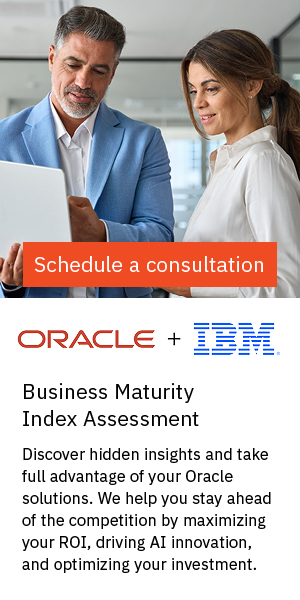Enterprise Resource Planning (ERP) systems are the digital nervous system of the modern enterprise. They connect departments, streamline processes, manage data, and support critical business functions—from finance to supply chain to human resources. And yet, for all their importance, ERP systems are often treated as if they’ll run themselves once deployed.
This misplaced confidence can be a costly mistake.
ERP systems are dynamic, not static. They evolve constantly—whether through software patches, configuration updates, new user roles, or integration changes. And with each change comes a potential risk: a misaligned workflow, a security vulnerability, a data error, or a compliance breach. Even small issues can have large consequences, rippling across systems and departments.
Fortunately, organizations don’t have to wait for things to break before they act. By investing in robust testing, continuous quality assurance (QA), and real-time monitoring, businesses can dramatically reduce risk, improve ERP performance, and uncover significant return on investment—often in places they never thought to look.
Tricentis, Original Software, and Delinea are helping enterprises shift from reactive to proactive ERP management, with strategies that deliver both operational resilience and real financial gains.
The Cost of Errors: It’s Not Just Technical
When an ERP system fails, the impact can be immediate—and painful. Imagine an inventory system that misallocates stock, a payroll module that delays employee pay, or an access rights issue that exposes sensitive financial data. These aren’t just glitches; they’re business-critical failures that can disrupt operations, damage trust, and invite regulatory scrutiny.
Studies suggest that more than half of ERP implementations experience some form of post-deployment disruption, often caused by insufficient testing or a lack of proactive system oversight. And as ERP platforms increasingly shift toward agile, cloud-native architectures with frequent updates and integrations, the potential for disruption only grows.
That’s why leading organizations are embracing a new mindset: one that treats ERP quality and monitoring not as optional extras, but as essential components of long-term success.
Tricentis: Speed Meets Stability
In a world of rapid deployment and continuous updates, Tricentis is redefining how enterprises approach ERP testing. The company’s platform leverages AI-driven test automation to validate complex ERP workflows, data integrations, and user processes across multiple environments—all at scale and speed.
Traditional testing methods often rely on manual scripting and lengthy QA cycles, which slow down innovation and miss key edge cases. Tricentis flips that model by integrating directly into Continuous Integration/Continuous Delivery (CI/CD) pipelines, enabling real-time validation as part of every update or change.
With automated testing, companies can simulate thousands of use cases in just a few hours, catching issues before they reach production. The result: fewer rollbacks, smoother launches, and more confident innovation.
For organizations operating on platforms like SAP, Oracle, or Microsoft Dynamics, this kind of continuous testing can be a game-changer—transforming ERP from a risk to a growth enabler.
Original Software: Testing from the User’s Point of View
While backend automation is vital, the success of any ERP system ultimately rests on the experience of the people using it. That’s the focus of Original Software, a company that brings testing down to the ground level—where workflows meet real users.
Original Software’s tools help bridge the gap between IT and business users by enabling end-to-end functional testing and user acceptance testing (UAT) without requiring technical expertise. Users can record their interactions with the system, highlight inconsistencies, and test business-critical tasks—without ever writing a line of code.
This approach ensures that ERP systems aren’t just technically sound, but also usable and aligned with day-to-day workflows. It also fosters collaboration between departments, reduces reliance on IT for testing support, and shortens the time to go-live readiness.
By uncovering issues that might otherwise be missed—such as workflow breakdowns, data entry friction, or unexpected user behaviors—Original Software helps companies reduce post-launch support calls, improve adoption rates, and increase overall productivity.
Delinea: Watching What Matters Most
Beyond functionality and usability lies another critical ERP dimension: security. Especially in large or regulated organizations, user access and permissions must be tightly controlled to avoid conflicts of interest, data leaks, or compliance violations.
Delinea’s Fastpath offers an integrated solution for access monitoring, segregation of duties (SoD) conflict detection, and audit readiness. Its tools provide real-time insight into who has access to what within an ERP environment—and whether that access introduces risk.
By continuously analyzing roles, permissions, and user behavior, Fastpath can automatically flag anomalies, enforce policy controls, and generate audit-ready reports. This streamlines compliance with standards like SOX, GDPR, and HIPAA, while also reducing the internal burden of manual review.
For many organizations, the savings are twofold: fewer audit findings (and associated penalties), and significantly reduced staff hours spent on access reviews and documentation.
Where the ROI Hides (and How to Find It)
Testing and monitoring might not carry the same flash as a new analytics dashboard or AI module—but they drive real, measurable returns. Here’s where businesses can often find hidden value:
- Downtime Avoidance: For large enterprises, an hour of ERP downtime can cost anywhere from $100,000 to over $1 million. Preventing just one major outage easily justifies the cost of a QA platform.
- Shorter QA Cycles: Automated testing can reduce ERP testing cycles from weeks to days—accelerating release timelines and enabling more responsive business operations.
- Fewer Support Tickets: Identifying issues before deployment means less post-launch firefighting, fewer help desk calls, and lower user frustration.
- Compliance Confidence: Proactive access monitoring means smoother audits, fewer surprises, and a lower risk of non-compliance fines.
- Happier Users: Systems that are tested for real usability see better adoption, faster onboarding, and fewer training challenges—translating to improved workforce productivity.
In short, ERP QA isn’t just about reducing risk. It’s about enhancing performance, reducing waste, and enabling growth.
A New Standard for ERP Success
As ERP systems become more agile, modular, and interconnected, the margin for error shrinks. Businesses can no longer afford to rely on reactive maintenance or one-time testing strategies.
The future of ERP requires continuous validation, real-time oversight, and user-centered design—all underpinned by platforms like Tricentis, Original Software, and Delinea.
These aren’t just tools; they’re strategic assets that help businesses stay one step ahead of risk, change, and complexity. Because in the world of enterprise technology, what you don’t see coming is often what costs you most.
What this means for ERP Insiders
Proactive ERP testing saves more than it costs. Relying on manual testing or waiting for problems to emerge post-deployment is a high-risk, high-cost strategy. Automated testing platforms allow businesses to validate thousands of workflows quickly and accurately, dramatically reducing downtime, deployment delays, and costly rollbacks. By integrating testing into continuous delivery pipelines, organizations can ensure ERP changes are stable and reliable—without slowing innovation. In many cases, avoiding a single system failure or critical bug more than justifies the investment in automated testing. Smart QA isn’t a cost center—it’s a business continuity strategy with measurable returns.
Usability testing drives adoption and productivity. Technical success doesn’t guarantee operational success. If ERP users can’t navigate workflows, perform key tasks, or trust the system, adoption will suffer—and support costs will rise. Bringing a user-centric lens to ERP testing enables business teams to test real-world scenarios without needing technical skills. This approach uncovers hidden issues like inefficient workflows, UI friction, and misaligned processes before they impact productivity. By involving users in the testing process and addressing their needs early, companies reduce resistance, accelerate onboarding, and maximize ROI from their ERP investment.
Access monitoring prevents compliance headaches. Security and compliance risks often lurk in overlooked corners of ERP environments—especially around user permissions and segregation of duties. Continuous, automated monitoring can flag risky access patterns and simplify audit preparation. For decision-makers, this means fewer fines, faster audits, and tighter control over who can access what. Beyond compliance, real-time access visibility enhances governance and trust across the enterprise. By embedding monitoring into day-to-day operations, companies move from reactive defense to proactive risk management—unlocking not just security benefits, but operational efficiency and peace of mind.






